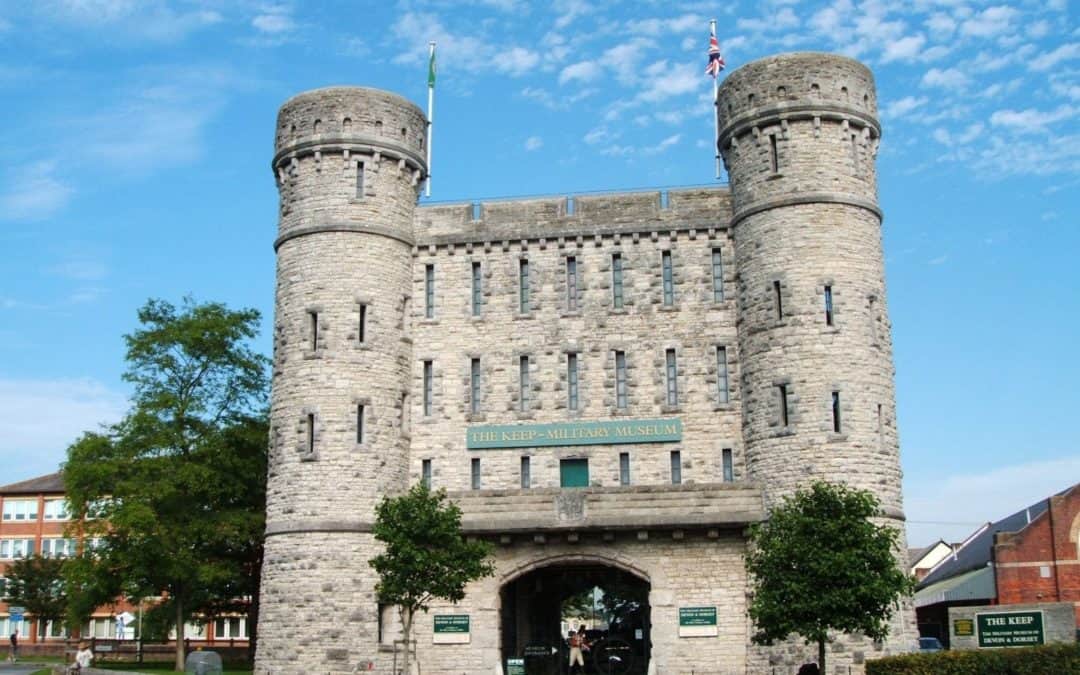The beautiful county of Dorset in the popular region of South West England has something to please just about everyone. The towns of Dorchester and Poundbury are no exceptions. The county itself features both stunning countryside and breathtaking coastline. This includes the famous Jurassic coast, a World Heritage Site. What’s more, there’s castles, museums, gardens, pretty villages scattered all around, and a wide variety of accommodation available. Take your pick from accommodation suitable for families, adults or solo travelers, and visit the new town of Poundbury which brings something unique to the county.
Location
The word Dorset is derived from the name of its county town, Dorchester; a picturesque market town by the River Frome between Bridport and Poole. It is also close to Yeovil in Somerset and Weymouth, along the coast. There were settlements in the area during prehistoric times. Maiden Castle, which stands above the town, is one of Europe’s best examples of an Iron Age hill fort. Furthermore, timber post holes of a Great Henge were found under medieval and Roman remains in the town.
History of Dorchester
The Romans established a garrison and an aqueduct here, together with an amphitheatre at the neolithic henge of Maumbury Rings. Today, the country’s only fully-exposed Roman Town House is still open to the public in Dorchester. When the invaders left, the town lost some of its significance. However, during medieval times, it regained its importance as a trading and political centre. The town was the scene of some of the 1685 Bloody Assizes trials that followed the Monmouth Rebellion. This is when the Duke of Monmouth tried to overthrow James II. Furthermore, the notorious Judge Jeffreys was sent to quell any lingering desire for rebellion, and the assizes lived up to their name.
The County Museum is closed for renovation until 2020. However, when it reopens, visitors will be able to discover the area’s history. This includes the period from prehistoric times to today plus walking on Roman floor tiles. There’s also a gallery about the Jurassic Coast where you can imagine the creatures that once stalked the land. As befits a place associated with the writer Thomas Hardy, the building also hosts a literary festival. Other events continue to be held during closure. These are detailed on the venue’s Facebook page. Tourists can also found out more about the distant past at the Dinosaur Museum, which has displays of skeletons and fossils that will thrill children. The latter will also love the Bones Museum, the Mummies Exhibition and the Teddy Bear Museum, while the Tutankhamun Exhibition and the replicas of China’s amazing Terracotta Warriors will interest all ages.
Eldridge Pope Brewery, Dorchester
Art lovers can browse a collection of contemporary artwork in the art gallery situated on Brewery Square. Its name is derived from the original site of the prestigious Eldridge Pope Brewery, once the town’s biggest employer. The company bought new land in 1879 close to the railway, which had arrived thirty years earlier. They took advantage of this to greatly improve distribution countrywide. At one time, it even had its own railway siding. Thomas Hardy’s Ale, created in 1978 was recorded in the Guinness Book of Records as the UK’s strongest ale in commercial production. It was produced to commemorate the fortieth anniversary of the author’s death and proved very popular. It was brewed until 1999 when the brewery was sadly forced to close in 2003.
Thomas Hardy
This June will see the first Thomas Hardy Victorian Fair, commemorating 90 years since the death of the novelist. The weekend will also include talks, walks and the laying of a wreath at Hardy’s statue. Organisers hope that if it’s a success, it could be an regular event. Hardy was born near Dorchester, and lived in the town for many years. Furthermore, he made it the setting for his book The Mayor of Casterbridge. In an earlier novel, Far From The Madding Crowd, Hardy had re-named this part of the west of England as Wessex; an early Saxon kingdom in the same area.
Although he spent some years away from Dorset, Hardy returned to the county during his second marriage. He wrote other works that included The Return of the Native. He then designed and moved into a house in Dorchester that was constructed by his brother. It was here that he wrote the Mayor of Casterbridge. Later books included Tess of the d’Urbervilles and Jude the Obscure. Hardy was always acutely aware of the social constraints and the class system of Victorian Britain, a theme that he pursued in his writings. His birthplace at Bockhampton, and his last residence at Max Gate, are both now National Trust properties.
Thomas Hardy was also a magistrate at Shire Hall. Shire Hall was the Crown Court for over two hundred years from its opening in 1797. It provided him with material for his novels, particularly Tess of the d’Urbervilles. It is likely that the novel was influenced by the case of Martha Brown, the last female prisoner to have been hanged in Dorset.
Tolpuddle Martyrs
This courtroom was also the site of the trial for the Tolpuddle Martyrs, six Dorset workers who formed the Friendly Society of Agricultural Labourers. At the time, these societies had some common ground with trades unions. This meant the men were meeting illegally, and refusing to accept lowered wages. In 1834, they were transported to Australia to begin penal servitude. However, a public outcry led to their pardon a couple of years later, enabling them to return to England. The courtroom is now a museum telling their tale and examining their influence on the development of the trades union movement. Furthermore, the village of Tolpuddle itself remembers the men with a festival every July.
Until 1958, Dorchester’s military barracks were home to the Dorset Regiment. This is still an important part of The Keep Museum, looking for all the world like a Norman castle in light-coloured Portland Stone. Digital and computerised displays enable visitors to learn about early militia campaigns, regiments and battles. What’s more, they can read stories of bravery and sacrifice from the Napoleonic Wars to today. Lastly, a new gallery covers the military history of Dorchester and Dorset.
Poundbury
Those who want to look back, but with modern touches, will enjoy a stroll round the new town of Poundbury. Situated on the edge of Dorchester, it sits on land belonging to the Duchy of Cornwall. Poundbury was built following the ideas of Prince Charles, who disagrees with the suburban nature of post-war town planning. He strongly believes that living accommodation should be integrated with amenities. The development has both fans and critics, but residents are enthusiastic. Poundbury is laid out to an urban plan, with integrated social and private dwellings side by side, mixed with shops and businesses. The Prince of Wales’ strong environmental beliefs make sustainable development an extremely important concept in Poundbury, and added period features fit in with one of his other passions.
Ironman Triathlon
The world comes to Dorset with the Ironman Triathlon at Weymouth. The race is one of a series that originated in 1978 in Hawaii, where it is still held today. The disciplines are swimming, cycling and a long-distance run, with no breaks. Competitors can burn up to ten thousand calories during the day. Locally, the course takes in the sea, Weymouth’s promenade, and some stunning scenery inland. The event takes place in September each year, so weather conditions can vary wildly, and it can be a gruelling experience. Yet as the banners point out “Anything is Possible”. With this in mind, those taking part feel a tremendous sense of achievement and community spirit. Despite its title, the contest features both women and men, and is a great spectator sport, too.
Transport
Dorchester South rail station is on a direct line to London Waterloo. The approximate journey time is just over three hours. Fares vary, but off peak, and particularly advance tickets, are cheaper.
Tourism
The Tourist Information Centre can provide visitors with advice on what’s happening, what to see, and where to stay. Additionally, the staff help with ticket bookings and timetables for public transport, including ferries. Maps and local guides of both Dorchester and Poundbury are also available to purchase from the centre. Walks are a popular way to get a feel for the area with plenty of stunning routes to explore.
Accommodation includes anything from camping to hotels, with caravan parks, Bed and Breakfast, self-catering, farms and inns as choices in between. And for the benefit of locals and tourists alike, this bustling market town offers a good choice of shops of all kinds. This includes both traditional and farmers’ markets, with plenty of restaurants, pubs and cafés where shoppers and tourists can recharge their batteries.
Discover more…
If you’ve enjoyed reading this article about Dorchester and Poundbury in Dorset, why not read some of our other articles? Our blog covers lots of interesting articles about the county of Dorset, London, digital marketing and web security.

WordPress Managed Hosting, Setup, Security, Design and Maintenance Specialists
We provide WordPress services that include full WordPress setup to an agreed specification, web design, managed hosting and enterprise-level security features. We then provide maintenance services to keep your website running securely and with a high level of performance.



